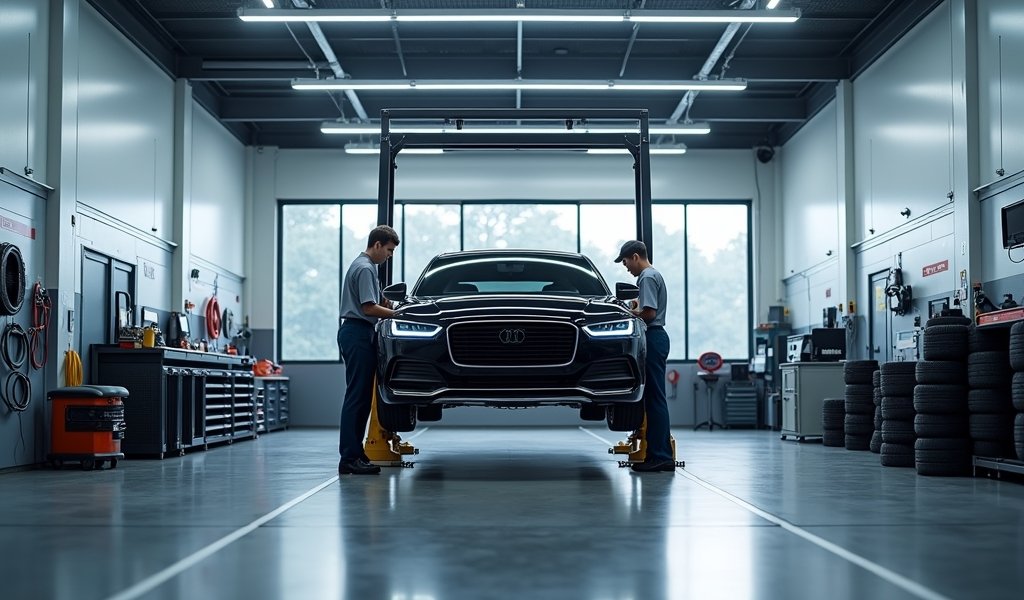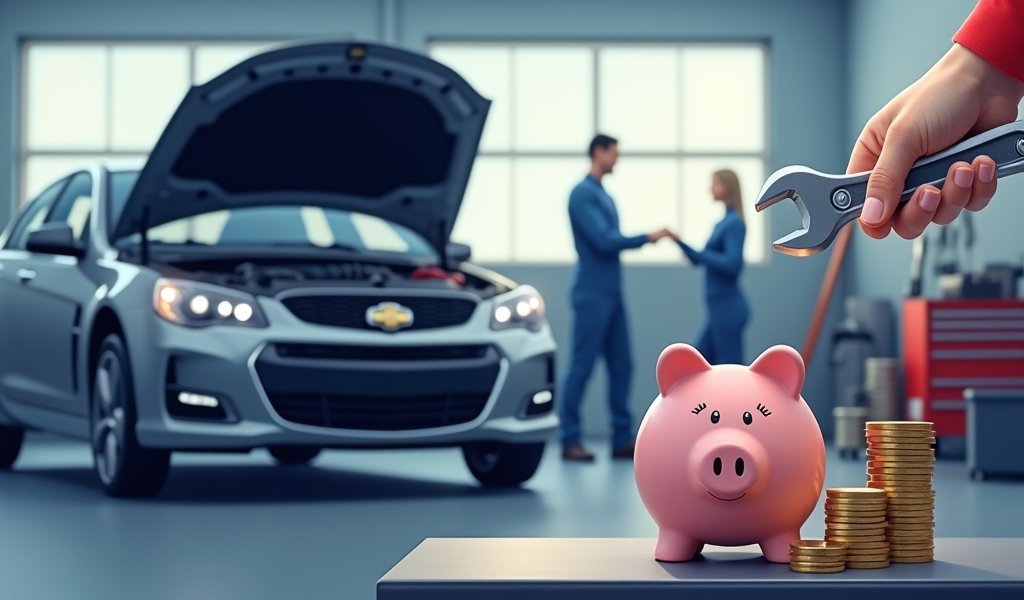Overview
This article provides seven practical money-saving strategies for car maintenance, including scheduling preventative maintenance, finding reliable independent mechanics, learning DIY basics, comparing prices, using coupons, considering aftermarket parts, and bundling services. Following these approaches can save car owners up to $500 annually on maintenance costs without compromising vehicle reliability or longevity.
Table of Contents
- Introduction
- Understanding the Average Cost of Car Service
- Tip 1: Schedule Regular Preventative Maintenance
- Tip 2: Find a Reliable Independent Mechanic
- Tip 3: Learn Basic DIY Maintenance
- Tip 4: Compare Prices and Request Quotes
- Tip 5: Use Manufacturer Coupons and Service Specials
- Tip 6: Consider Aftermarket Parts
- Tip 7: Bundle Services When Possible
- Conclusion
- Frequently Asked Questions
Introduction
Let’s face it – keeping your car running smoothly isn’t getting any cheaper. With today’s economy pushing costs up across the board, that trip to the service center often ends with a bill that makes your wallet weep. I’ve seen it countless times in my shop – folks genuinely surprised when they learn the average driver spends between $500 and $1,200 yearly just on routine maintenance.
But here’s the thing – skipping regular service is like ignoring that tiny leak in your roof. What starts as a minor issue eventually becomes a major headache (and expense). Proper maintenance not only extends your vehicle’s life but actually saves money by preventing catastrophic failures down the road.
The good news? After 20+ years under the hood, I can tell you there’s plenty of ways to maintain your ride properly without draining your bank account. I’ve helped hundreds of customers save up to $500 annually without cutting corners on quality.
Let me walk you through seven battle-tested strategies that’ll keep both your car and budget in great shape. These aren’t just theoretical tips – they’re practical solutions I recommend to my own customers every day.
Understanding the Average Cost of Car Service
Before we dive into saving strategies, let’s get a clear picture of what you’re actually paying for. Car service costs vary dramatically based on several factors, and knowing the benchmarks helps you spot both bargains and ripoffs.
Different vehicles come with different price tags for maintenance:
- Economy Cars: $50-$150 for basic service
- Mid-Range Vehicles: $150-$300 for basic service
- Luxury Vehicles: $300-$500+ for basic service
For standard service components, here’s what you should expect to pay:
- Oil change: $25-$75 (conventional) or $50-$125 (synthetic)
- Air filter replacement: $20-$50
- Cabin air filter: $30-$70
- Brake fluid flush: $80-$120
- Coolant flush: $75-$150
- Transmission fluid change: $100-$250
- Tire rotation: $20-$50
Several factors influence these prices. Urban areas typically charge more than rural shops. Dealerships run about 30% higher than independent mechanics. Your vehicle’s make, model, and age play huge roles in pricing, as do parts quality and local labor rates (which can range from $75 to $150 hourly).
According to research from AAA, the average annual cost of vehicle maintenance and repairs is approximately $792 for newer vehicles. This figure tends to climb as cars age beyond their warranty periods.
Now that you know what to expect, let’s look at how to bring those numbers down.

Tip 1: Schedule Regular Preventative Maintenance
Here’s something that might sound counterintuitive – sometimes you need to spend money to save money. Regular preventative maintenance is the single most effective way to avoid costly repairs down the road.
Take oil changes, for example. That $50-$75 service every 5,000-7,500 miles might seem like an unnecessary expense when your car seems to be running fine. But neglect this simple maintenance, and you’re looking at potential engine damage requiring $3,000-$5,000 in repairs or even complete replacement.
I had a customer who skipped oil changes to “save money” – until his engine seized on the highway. That $45 oil change he avoided ended up costing him $4,200 for a rebuilt engine. Don’t be that person.
For most modern vehicles, follow these service intervals:
- Oil changes every 5,000-7,500 miles (check your owner’s manual)
- Tire rotations every 5,000-7,000 miles
- Fluid checks and top-offs every 3 months
- Comprehensive inspections annually
The math is simple: Spending $300-$600 on annual preventative maintenance typically saves at least $1,000 over a 5-year period through avoided major repairs. That’s a significant chunk of our promised $500 annual savings right there.
Create a simple car service checklist based on your vehicle’s owner manual. Those seemingly boring maintenance schedules were created by engineers who designed your car – they know what it needs to survive.
Tip 2: Find a Reliable Independent Mechanic
I’ve worked at both dealerships and independent shops, so I’ll let you in on a little secret: dealerships typically charge premium rates for services that independent shops can perform just as well.
Don’t get me wrong – dealership technicians receive excellent brand-specific training. But for vehicles out of warranty, a quality independent mechanic can save you significant money without sacrificing quality.
Let’s break down the typical pricing difference:
- Dealership hourly labor rates: $95-$150
- Independent shop hourly labor rates: $70-$110
- Average savings per service: 20-30%
A timing belt replacement might cost you $850 at the dealership but only $650 at my independent shop – that’s $200 savings on a single service. Those savings add up fast.
Finding a trustworthy independent mechanic does require some homework:
- Ask friends and family for recommendations – personal referrals are golden
- Check online reviews thoroughly (Google, Yelp, Angie’s List)
- Verify ASE certifications – this is the industry standard
- Start with a small job to test their work before trusting them with major repairs
- Ensure they have experience with your specific make and model
Finding a good car repair near me can take time, but it’s worth the effort. A trustworthy mechanic relationship could easily save you $150-$300 annually on maintenance services.
Tip 3: Learn Basic DIY Maintenance
Not everyone needs to become a certified mechanic to handle some basic car maintenance. Some tasks are surprisingly simple and can save both labor costs and markup on parts.
In my decades as a mechanic, I’ve taught countless car owners to perform these DIY-friendly tasks:
- Air filter replacement (savings: $15-$30)
- Cabin air filter replacement (savings: $20-$40)
- Wiper blade replacement (savings: $10-$20)
- Battery replacement (savings: $25-$50)
- Headlight/taillight bulb replacement (savings: $10-$30)
- Basic fluid top-offs (savings: $20-$50)
You’ll need some basic tools, but the investment pays for itself quickly:
- Basic socket set and wrenches ($30-$60)
- Screwdrivers ($15-$20)
- Jack and jack stands ($50-$100)
- Oil drain pan ($10-$15)
- Funnel ($5)
YouTube has revolutionized DIY car maintenance. Just search your specific vehicle make and model plus the service you’re trying to perform. You’ll likely find detailed tutorials showing exactly how to complete the job.
According to a Consumer Reports study, DIY maintenance can reduce overall maintenance costs by 15-20% for the average car owner. With an initial investment of about $100-$200 in tools, you could easily save $100-$200 annually on labor costs for simple maintenance tasks.
Tip 4: Compare Prices and Request Quotes
One mistake I see customers make repeatedly is accepting the first service quote they receive. Taking time to compare prices can reveal surprisingly large variations for identical services.
Here’s my strategy for effective price comparisons:
- Call at least three shops for quotes on the specific service needed
- Be detailed about your vehicle and exactly what service you need
- Ask if the quote includes parts, labor, and potential additional fees
- Request an itemized estimate in writing before authorizing work
Several online tools make price comparison easier than ever:
- RepairPal.com
- YourMechanic.com
- Openbay.com
- AutoMD.com
Don’t be afraid to negotiate politely. Mention competitor quotes (without being confrontational), ask about price matching, inquire about discounts for bundling multiple services, or request a small discount for being a new customer or paying in cash.
I’ve seen price differences of 30% or more between shops for identical services. This approach typically saves my customers 10-15% on service costs, translating to $50-$150 in annual savings.

Tip 5: Use Manufacturer Coupons and Service Specials
Dealerships and service chains offer discounts and promotions regularly to attract customers. Many people don’t realize these deals exist or forget to ask about them.
Here’s where to hunt for these hidden savings:
- Manufacturer websites and email newsletters
- Dealership websites and social media pages
- Local service chain websites
- Coupon sites like Groupon and RetailMeNot
- Direct mail flyers
- Your vehicle manufacturer’s mobile app
Different seasons bring different specials. Watch for AC service and cooling system deals in spring/summer, heating system checks and winter preparation packages in fall/winter, and new customer specials year-round.
Don’t overlook loyalty programs, either. Many shops offer cumulative discounts or free services after multiple visits. These programs are especially valuable at:
- Dealership service departments
- Tire retailers (Discount Tire, Tire Rack)
- Quick lube chains (Jiffy Lube, Valvoline)
- Auto parts stores (AutoZone, O’Reilly, NAPA)
I’ve seen customers save up to 40% on major services just by timing their maintenance to align with promotional periods. Strategic use of coupons and specials can easily save you $75-$150 per year.
Tip 6: Consider Aftermarket Parts
Original Equipment Manufacturer (OEM) parts come directly from your vehicle’s manufacturer and match what was installed during production. While they ensure perfect compatibility, they often carry a significant price premium.
After 20+ years in the business, I’ve seen aftermarket parts quality improve dramatically. Today, many aftermarket components match or even exceed OEM quality at a fraction of the cost.
Here’s when aftermarket parts make sense:
- For vehicles older than 5 years
- Common replacement items (filters, brake pads, spark plugs)
- When premium aftermarket brands offer improved designs
- When lifetime warranties are available
And when you might want to stick with OEM:
- Complex electronic components
- Safety-critical systems
- When aftermarket options have poor reviews
- When your vehicle is under warranty
The savings can be substantial:
- Air and cabin filters: 40-60% savings
- Brake pads and rotors: 30-50% savings
- Alternators and starters: 20-40% savings
- Suspension components: 30-50% savings
I recommend researching specific parts on forums dedicated to your vehicle model. Car Complaints is another excellent resource for identifying which components might benefit from upgraded aftermarket versions.
By selectively using quality aftermarket parts, you can save $100-$200 annually on parts costs without compromising reliability.
Tip 7: Bundle Services When Possible
Many repair costs are heavily weighted toward labor, with shops charging by the hour. When multiple systems need attention, bundling services can significantly reduce overall costs.
Here’s why bundling works so well:
- Reduced total labor time (technicians don’t need to repeatedly disassemble the same components)
- Lower shop overhead costs
- Fewer service visits (saving you time and transportation costs)
- Simplified maintenance tracking
Some of the most effective service bundles include:
- Timing belt replacement + water pump: Save 40-50% on labor for the water pump
- Brake pads + rotors + fluid flush: Save 20-30% compared to separate services
- Multiple fluid changes at once: Save 30-40% on labor
- Spark plugs + ignition coils + air filter: Save 25-35% on labor
When bringing your car in for service, always ask: “What else should be inspected or replaced while you’re in that area?” and “Would combining these services save on labor costs?”
I recently had a customer who needed a timing belt replacement. By adding the water pump and camshaft seals to the job, we saved him $350 compared to doing those services separately. Strategic service bundling can save you $75-$150 annually.
Conclusion
Implementing these seven strategies can realistically save you $500 or more on annual car maintenance:
- Regular preventative maintenance: $200+ saved in avoided major repairs
- Using independent mechanics: $150-$300 saved versus dealership pricing
- DIY basic maintenance: $100-$200 saved on simple tasks
- Comparing prices: $50-$150 saved through competitive shopping
- Using coupons and specials: $75-$150 saved through promotions
- Selecting quality aftermarket parts: $100-$200 saved on parts costs
- Bundling services: $75-$150 saved through efficient service scheduling
The best part? These savings don’t come at the expense of your vehicle’s reliability or longevity. In fact, many of these strategies encourage more proactive care that extends your car’s useful life.
Remember that regular maintenance isn’t just an expense—it’s an investment that pays dividends through improved safety, reliability, and resale value. By approaching car care strategically, you maintain your vehicle properly while keeping your budget intact.
Start by reviewing your vehicle’s maintenance schedule, creating a service calendar, and researching reputable independent shops in your area. Small changes in how you approach car maintenance can lead to significant savings over time without cutting corners on quality.
Your car takes care of you every day. With these strategies, you can take care of it without breaking the bank.
Frequently Asked Questions
How much should I budget annually for car maintenance?
Plan to spend 1-2% of your vehicle’s value annually for maintenance on newer cars, increasing to 3-5% for vehicles older than 10 years. This translates to roughly $500-$1,200 for most vehicles, depending on age and type.
Are dealer services worth the extra cost?
Dealer services are generally only worth the premium during warranty periods or for complex computer/electrical issues specific to your make. For routine maintenance and standard repairs, independent shops typically provide equal quality at 20-30% savings.
How often should I really change my oil?
Most modern vehicles can safely go 5,000-7,500 miles between oil changes with conventional oil, or 7,500-10,000 miles with full synthetic. Always check your owner’s manual for the manufacturer’s specific recommendation for your model.
What’s the most expensive regular maintenance item?
Timing belt replacement is typically the most expensive regular maintenance item, costing between $500-$1,000 depending on your vehicle. This service is generally required every 60,000-100,000 miles for vehicles with timing belts.
Can I skip scheduled maintenance to save money?
Skipping scheduled maintenance almost always costs more in the long run through decreased fuel efficiency, premature component failure, and major repair needs. Regular maintenance is the most effective way to minimize your vehicle’s lifetime ownership cost.


Pingback: Brake Fluid Change Cost: Proven Tips to Save Over $150 - knowsyourcar.com
Pingback: Cheapest Place for Oil Change: Save $20 - knowsyourcar.com